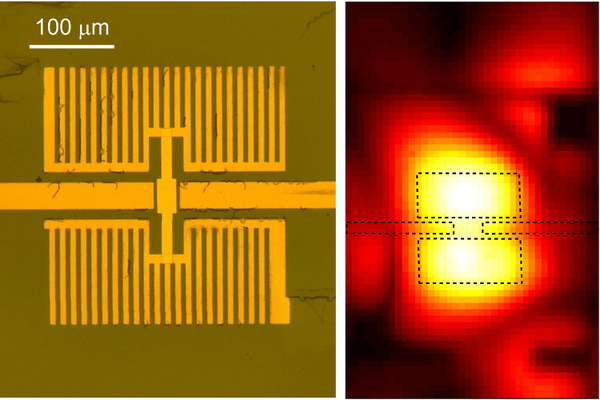|
researchers from across europe, including from the university of cambridge (u.k.), the institute of photonic sciences (icfo) in spain, and the university of ioannina in greece, working under the auspices of the graphene flagship have developed a new, graphene-based pyroelectric bolometer that is highly sensitive and registers infrared radiation with a high level of accuracy.

the graphene-based infrared detectors are ultra-sensitive thermometers, detecting minute changes in temperature.
(emberion)
according to an announcement from the graphene flagship, which is a joint research effort sponsored by the european commission to make graphene into commercially viable products, the bolometer had the highest reported thermal sensitivity for “graphene-based, uncooled thermal detectors.”
“only a few nano-watts of ir radiation power are required to produce such a small temperature variation in isolated devices, about 1,000 times smaller than the ir power delivered to the detector by a human hand in close proximity,” the article continued.
the researchers used a pyroelectric substrate, which creates an electric field due to changes in temperature, with a single layer of graphene as a conductive channel and a floating gate electrode on top. the floating gate concentrates the electrical field on the graphene, which changes its electrical resistance and that was measured by the device.
the article added, “graphene acts as a built-in amplifier for the pyroelectric signal, without needing external transistor amplifiers as in typical pyroelectric thermal detectors. this direct integration means that there are no losses and no additional noise from connections to external amplifying circuits.”
graphene’s inherent conductivity also makes it easier to connect it to an external readout integrated circuit (roic) to make sure that the signal is transmitted efficiently.
among the possible applications for this new technology are thermal imaging cameras and for security screenings that can better isolate the ir signal and limit that portion of the ir spectrum that is being detected.
frank koppens (icfo, spain), leader of the photonics and optoelectronics work package, added "one of the most promising applications of graphene is broadband photodetection and imaging. combining visible and infrared detection in one material system is not possible with any other existing technology. the graphene flagship program will further build on this work to develop hyperspectral imaging systems, and exploit the directions where graphene is unique."
the work was recently published in nature communications. the abstract stated:
“there is a growing number of applications demanding highly sensitive photodetectors in the mid-infrared. thermal photodetectors, such as bolometers, have emerged as the technology of choice, because they do not need cooling.
“the performance of a bolometer is linked to its temperature coefficient of resistance (tcr, ∼2–4% k−1 for state-of-the-art materials). graphene is ideally suited for optoelectronic applications, with a variety of reported photodetectors ranging from visible to thz frequencies. for the mid-infrared, graphene-based detectors with tcrs ∼4–11% k−1 have been demonstrated.
“here we present an uncooled, mid-infrared photodetector, where the pyroelectric response of a linbo3 crystal is transduced with high gain (up to 200) into resistivity modulation for graphene.
“this is achieved by fabricating a floating metallic structure that concentrates the pyroelectric charge on the top-gate capacitor of the graphene channel, leading to tcrs up to 900% k−1, and the ability to resolve temperature variations down to 15 μk.”
|